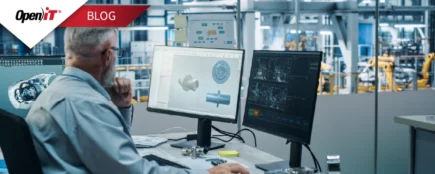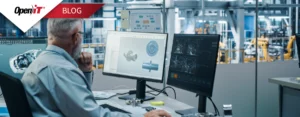
CUSTOMER SUCCESS STORIES
Murphy Oil
"Murphy Oil Gains 32x ROI and Reaps Huge Savings within the First 2 years"
Highlights
- Murphy Oil needed to consolidate the IT assets of merged business units. The geoscience exploration portfolio included 250 applications and subscriptions costs of $6 million each year.
- LicenseAnalyzer Level 1 provided insights on who, how and where resources were being used.
- Using license usage reports, Murphy Oil gained a 32x return on investment by eliminating unnecessary software purchases and reducing annual M&S costs.
Business Overview
Murphy Exploration & Production (E&P) has five global offices in addition to its retail division, which includes more than 1,300 gas stations. When the company merged two of its large business units, including domestic and international interests, the IT department was tasked with consolidating technology assets and developing strategic goals to streamline business processes and reduce costs.
Read on to see how the company garnered a savings of $1.3 million with an initial investment of only $43K in the first year, by using Open iT LicenseAnalyzer.
Business Challenge
Most IT departments struggle with servicing the needs of the organization while staying within budget. Often IT is viewed as a cost center, rather than a strategic resource. The reorganization, which merged several domestic and international business units, created new challenges for IT including:
- Company-wide centralization and consolidation of all IT assets
- Executive-level support for IT strategies by appointing business “champions”
- Increased communication about how and where resources were being used
To achieve these new initiatives, a director-level position was created to support the Houston-based Upstream Exploration business unit. Jason Daigle was selected to oversee the entire Geoscience exploration application portfolio, which was comprised of more than 250 individual applications and data subscriptions totaling $6 million in annual maintenance and support.
As the newly-appointed director of this initiative, Daigle established a single-point-of-contact (SPOC) process to improve communications between software vendors and Murphy E&P internal contacts. There was still a need for internal stakeholders to understand and manage all software procurement, evaluation, implementation and harvesting of licenses.
Whitepapers
Cost Allocation and IT Chargeback
The most efficient way to create more accountability and awareness of how IT resources are used is to implement a chargeback system.
Software Usage Monitoring and Optimization
Learn how usage monitoring in an E&P IT environment can be beneficial for many stakeholders.
Rising Use of Subscription and Pay-per-Use Software Licensing Models
Have a meaningful software usage metrics and tools to evaluate and plan appropriately prior to making new licensing decisions.
Take a Guided Tour
Get answers with a one-on-one walk-through.
Schedule a live demo today. We’ll show you how your business can benefit from an efficient software asset management program with Open iT usage metering tools.
Latest Blogs

Engineering Software Optimization with Open iT at Knowledge 2025
Knowledge 2025 kicks off today and Open iT is here at The Venetian Resort in Las Vegas to showcase how organizations can take control of their engineering and technical software environments—starting with the right data. From today through May 8, visit us at

Federal Software Audit Readiness in the Age of Escalating Vendor Scrutiny
As software vendors step up their audit efforts, federal agencies face unprecedented pressure to strengthen their software audit readiness. Historically constrained by fragmented IT infrastructures, decentralized systems, and limited visibility into license usage, many agencies are increasingly vulnerable to non-compliance

WEBINAR: Learn Effective Siemens NX Cost Optimization and Management
Organizations often underestimate the true Siemens NX software cost. With the increasing use of hybrid environments and the move toward more complex licensing structures, costs can quietly spiral out of control. What begins as a manageable setup of a few
Subscribe to our newsletter
Sign up to receive the latest news and updates.





